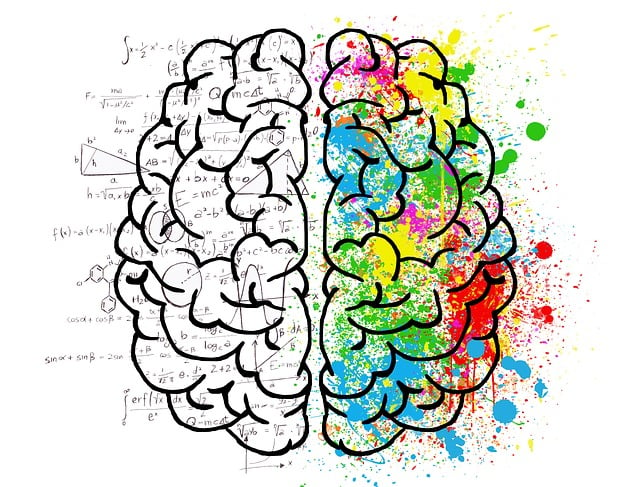Introduction
Bivariate data analysis is a fundamental aspect of statistics that involves studying the relationship between two variables. It provides insights into how changes in one variable are associated with changes in another. In this article, we will explore the concepts of bivariate data, scatter diagrams, correlation coefficients, and rank correlation.
Bivariate Data
Bivariate data consists of pairs of observations or measurements taken from two different variables for each individual or item. For example, consider a dataset where we record the hours studied ![]() and the corresponding test scores
and the corresponding test scores ![]() of several students. Each student’s data point would be represented as
of several students. Each student’s data point would be represented as ![]() .
.
Scatter diagram
A scatter diagram (also known as a scatter plot) visually represents bivariate data points on a graph. The ![]() and
and ![]() values are plotted as points, allowing us to observe patterns, trends, and relationships between the two variables. A scatter diagram helps us identify whether there is a positive, negative, or no correlation between the variables
values are plotted as points, allowing us to observe patterns, trends, and relationships between the two variables. A scatter diagram helps us identify whether there is a positive, negative, or no correlation between the variables
Correlation Coefficients
Correlation coefficients quantify the strength and direction of the linear relationship between two variables. Three common types of correlation coefficients are:
A. Simple Correlation :
Definition: Simple correlation measures the strength and direction of the linear relationship between two variables (![]() and
and ![]() ). It is represented by the Pearson correlation coefficient (
). It is represented by the Pearson correlation coefficient (![]() ).
).
Mathematical Notation: The Pearson correlation coefficient (![]() ) between two variables
) between two variables ![]() and
and ![]() is calculated as:
is calculated as:
![]()
Where ![]() and
and ![]() are individual data points,
are individual data points, ![]() and
and ![]() are the means of
are the means of ![]() and
and ![]() respectively.
respectively.
Real-Life Example: Consider a dataset that records the hours studied (![]() ) and the corresponding test scores (
) and the corresponding test scores (![]() ) of several students. The Pearson correlation coefficient (
) of several students. The Pearson correlation coefficient (![]() ) will quantify the strength and direction of the linear relationship between study hours and test scores. If
) will quantify the strength and direction of the linear relationship between study hours and test scores. If ![]() is close to 1, it indicates a strong positive correlation, implying that as study hours increase, test scores tend to increase as well.
is close to 1, it indicates a strong positive correlation, implying that as study hours increase, test scores tend to increase as well.
B. Partial Correlation
Definition: Partial correlation examines the relationship between two variables (![]() and
and ![]() ) while controlling for the influence of a third variable (
) while controlling for the influence of a third variable (![]() ).
).
Mathematical Notation: The partial correlation coefficient (![]() ) between variables
) between variables ![]() and
and ![]() , controlling for variable
, controlling for variable ![]() , is calculated as:
, is calculated as:
![Rendered by QuickLaTeX.com \[ r_{xy.z} = \frac{r_{xy} - r_{xz} \cdot r_{yz}}{\sqrt{(1 - r_{xz}^2) \cdot (1 - r_{yz}^2)}} \]](https://360studies.com/wp-content/ql-cache/quicklatex.com-684e3dad9ddeb7a5ad8a0bb7b912d5f2_l3.png)
Where ![]() is the simple correlation coefficient between
is the simple correlation coefficient between ![]() and
and ![]() ,
, ![]() is the simple correlation coefficient between
is the simple correlation coefficient between ![]() and
and ![]() , and
, and ![]() is the simple correlation coefficient between
is the simple correlation coefficient between ![]() and
and ![]() .
.
Real-Life Example: Consider a study analyzing the relationship between the hours spent studying (![]() ) and exam scores (
) and exam scores (![]() ), while controlling for the effect of sleep hours (
), while controlling for the effect of sleep hours (![]() ). The partial correlation coefficient
). The partial correlation coefficient ![]() will provide insight into the direct relationship between studying and exam scores while accounting for the influence of sleep.
will provide insight into the direct relationship between studying and exam scores while accounting for the influence of sleep.
C. Multiple Correlation
Definition: Multiple correlation analyzes the relationship between two variables (![]() and
and ![]() ) while considering the impact of additional predictor variables (
) while considering the impact of additional predictor variables (![]() ).
).
Mathematical Notation : The multiple correlation coefficient (![]() ) between variables
) between variables ![]() and
and ![]() , considering the predictor variables
, considering the predictor variables ![]() , is calculated as:
, is calculated as:
![Rendered by QuickLaTeX.com \[ R_{xy.z_1z_2\ldots z_n} = \sqrt{\frac{r_{xy}^2 - r_{xz_1}^2 - r_{xz_2}^2 - \ldots - r_{xz_n}^2}{1 - r_{xz_1}^2 - r_{xz_2}^2 - \ldots - r_{xz_n}^2}} \]](https://360studies.com/wp-content/ql-cache/quicklatex.com-9bd8f5eabe014ffdb163e7ac616ec63d_l3.png)
Where ![]() is the simple correlation coefficient between
is the simple correlation coefficient between ![]() and
and ![]() , and
, and ![]() are the simple correlation coefficients between
are the simple correlation coefficients between ![]() and each predictor variable
and each predictor variable ![]() .
.
Real-Life Example: Suppose you want to predict a student’s final exam score (![]() ) based on the number of hours studied (
) based on the number of hours studied (![]() ), sleep hours (
), sleep hours (![]() ), and attendance in review sessions (
), and attendance in review sessions (![]() ). The multiple correlation coefficient
). The multiple correlation coefficient ![]() will help assess the collective impact of studying, sleep, and attendance on the final exam score.
will help assess the collective impact of studying, sleep, and attendance on the final exam score.




